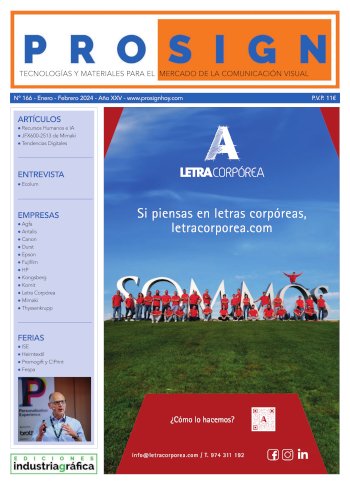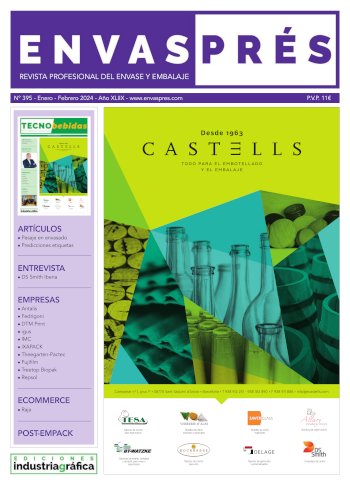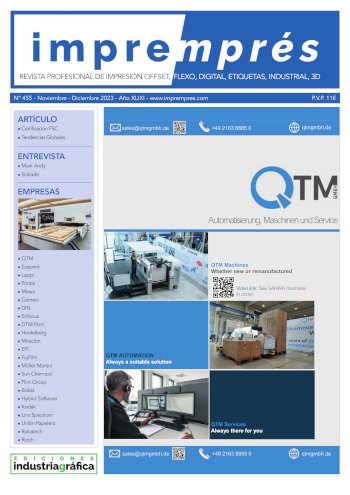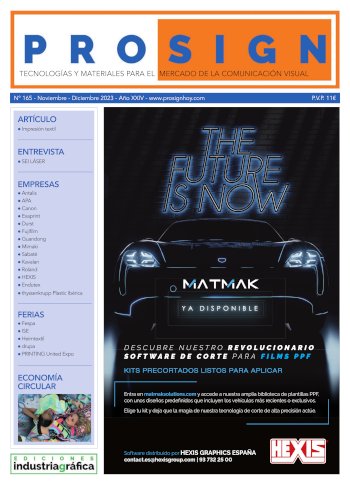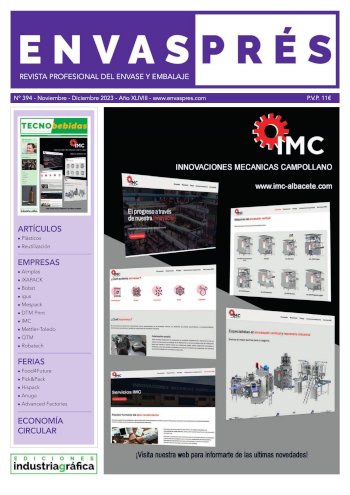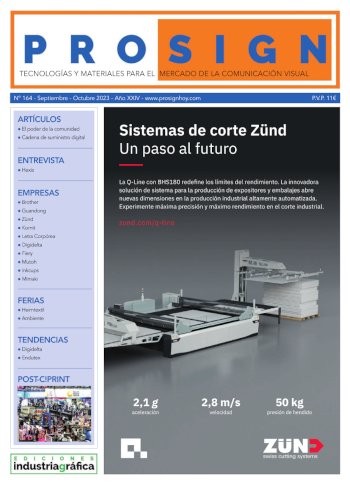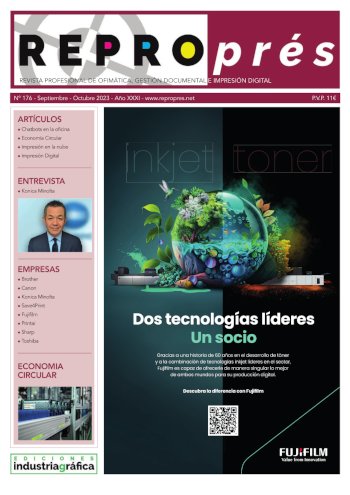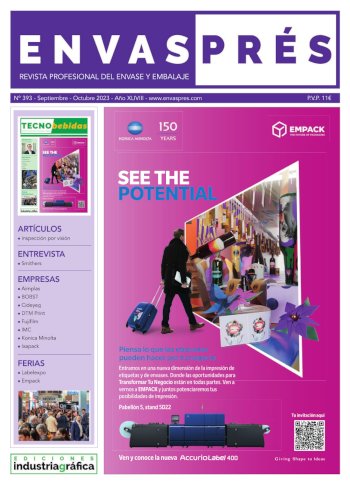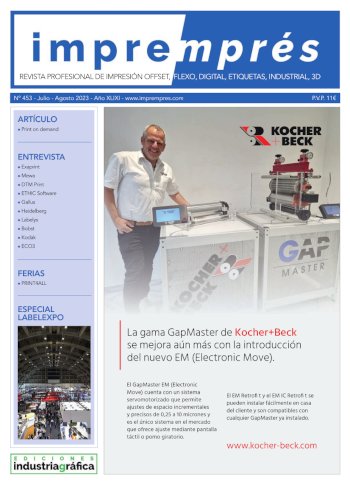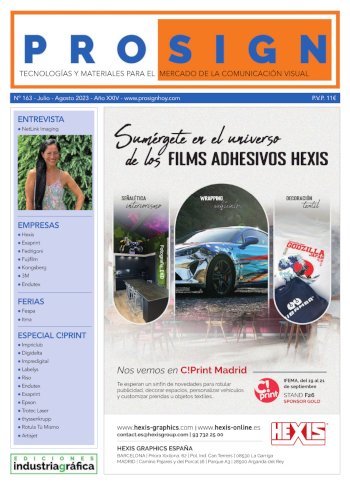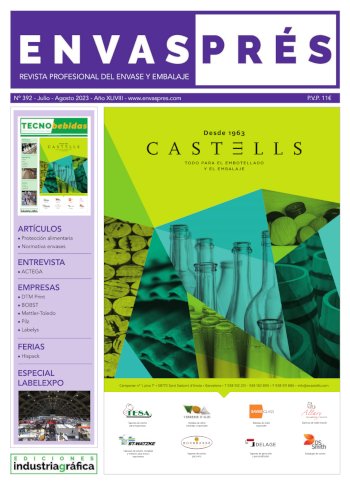Druckerei Lokay optimises its environmental profile by switching to Kodak Sonora XP
- Publicado el 09 de Junio de 2014
Some printing companies pay more than just lip service to the idea of consistently sustainable production – they put it into practice day in, day out. Druckerei Lokay, based in Reinheim, Hessen, is one of them. This family firm has a workforce of 27, supplying customers all over Germany with printed products created with sheet offset and digital printing. Sales literature, advertising brochures, leaflets, PoS material and books are the main revenue drivers. The company is headed by owner Ralf Lokay and signatory Thomas Fleckenstein and has built a unique reputation as an eco-printer over the last ten years.
Even before the fundamental decision was made in 2004 to move towards ecologically sound, sustainable production, Lokay was using mineral oil free inks based on vegetable oil in its printing processes. Since then the company has been working with its employees to review all the equipment and processes from an ecological point of view and optimise them.
Thomas Fleckenstein, who lives and breathes eco management and marketing for the printing company, regards the successful ÖKOPROFIT project, which ended in 2006, as the start of systematic environmental management. FSC certification, obtained in 2006, was a logical step forward and as early as 2007, Lokay joined a select group of printers in Germany which are certified for the EU Eco-Management and Audit Scheme (EMAS). 2007 was also when CO2 offsetting was consistently applied to production and logistics, with the exception of paper. Of course, customers can add the option of climate-neutral printing including CO2 offsetting for the paper used.
 Last year, as the company worked to further improve its environmental performance, marked an important milestone resulting in the conversion from a traditional offset plate with wet chemistry to KODAK SONORA XP Process Free Plates. As part of a EUR 1.5 million investment, the expansion and low-energy refurbishment of the production hall was completed in 2013 and the low-energy refurbishment of the administration building was completed in November of the same year. As a result, fossil fuels are no longer used to heat the buildings. The heating comes from the presses, supplemented if necessary by an external air source heat pump.
Last year, as the company worked to further improve its environmental performance, marked an important milestone resulting in the conversion from a traditional offset plate with wet chemistry to KODAK SONORA XP Process Free Plates. As part of a EUR 1.5 million investment, the expansion and low-energy refurbishment of the production hall was completed in 2013 and the low-energy refurbishment of the administration building was completed in November of the same year. As a result, fossil fuels are no longer used to heat the buildings. The heating comes from the presses, supplemented if necessary by an external air source heat pump.
The layout of the CTP area was changed as part of the building work. “The question was whether to plan space for a plate processing system and the necessary supply and discharge pipes, or instead to make the leap to a process free plate. If we make an improvement for environmental reasons, it can’t create technical problems for the process as a whole and must be economically feasible,” explains Ralf Lokay. “We tested two different plates. We eventually opted for the SONORA XP Plate because of the higher coating contrast and the longer storage times following imaging in the CTP system.” From the point of view of sustainability, the SONORA XP Plate has the advantage that it does not require traditional plate processing or separate post-processing or rinsing. The plate processing system and its pipes are no longer necessary. The electricity, water, developer, replenisher, gum or wash required by a traditional processed plate or “chemistry free” plate are no longer needed. No chemicals are consumed and there is no plate processor to clean and maintain, meaning that there are no left-over chemicals and fluids to dispose of.
Olivier Claude, General Manager Print EAMER, Kodak explains that “Kodak’s press ready technology provides rapid plate processing in the prepress stage and efficient start up and printing on press. The SONORA XP Plate has a single, very thin negative-working coating and can be imaged on most popular thermal CTP devices. The plate can then be put directly on press, skipping the processing step. As the press starts up, the unimaged coating is removed onto the first few makeready sheets. The fountain solution, which has been free of isopropyl alcohol for many years at Lokay for environmental and health reasons, is not affected in any way.”
The fully automatic thermal platesetter at Reinheimer Druckerei images between 50 and 70 SONORA XP Plates every day. Sheet offset production is spread over two to three shifts using two five-colour sheet offset machines in the format classes 70 x 100 cm and 50 x 70 cm. The substrates used are primarily taken from an extensive collection of environmentally friendly papers. The print runs are mostly between 10,000 and 20,000 sheets, which are far short of the run length capability for sheet offset using the process free plate (100,000 sheets). However, as Thomas Fleckenstein explains, KODAK SONORA XP Process Free Plates are occasionally used to handle 150,000 copies without difficulty.
The SONORA XP Plate, which has been in use by Lokay since the end of March 2014, helps the company to cut down on water consumption by eliminating traditional plate processing. In 2013 they managed to reduce water consumption by more than 31% to 541 cubic metres, simply by optimising water consumption in the plate processing system. The details are set out in the environmental statement of Druckerei Lokay. By converting to the SONORA XP Plate and collecting rainwater in an 8,000 litre tank, the company expects to further cut water consumption this year to below 200 cubic metres.
“The switch to the SONORA XP Plate was another important step in our process of improvement. Now that our buildings have been refurbished for low energy and we have got rid of the plate processing machine, we are fully optimised in terms of the environment,” says proprietor Ralf Lokay.



